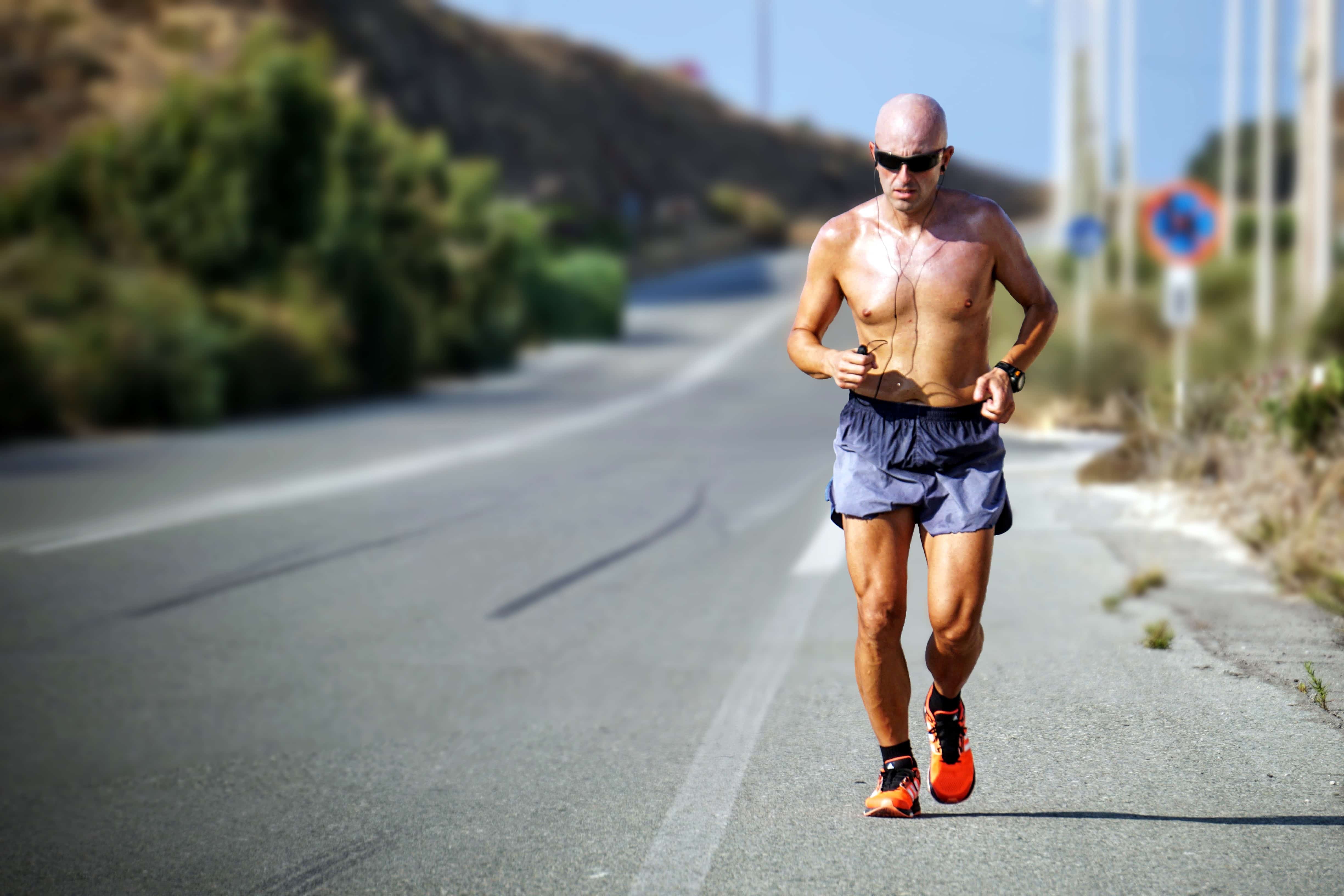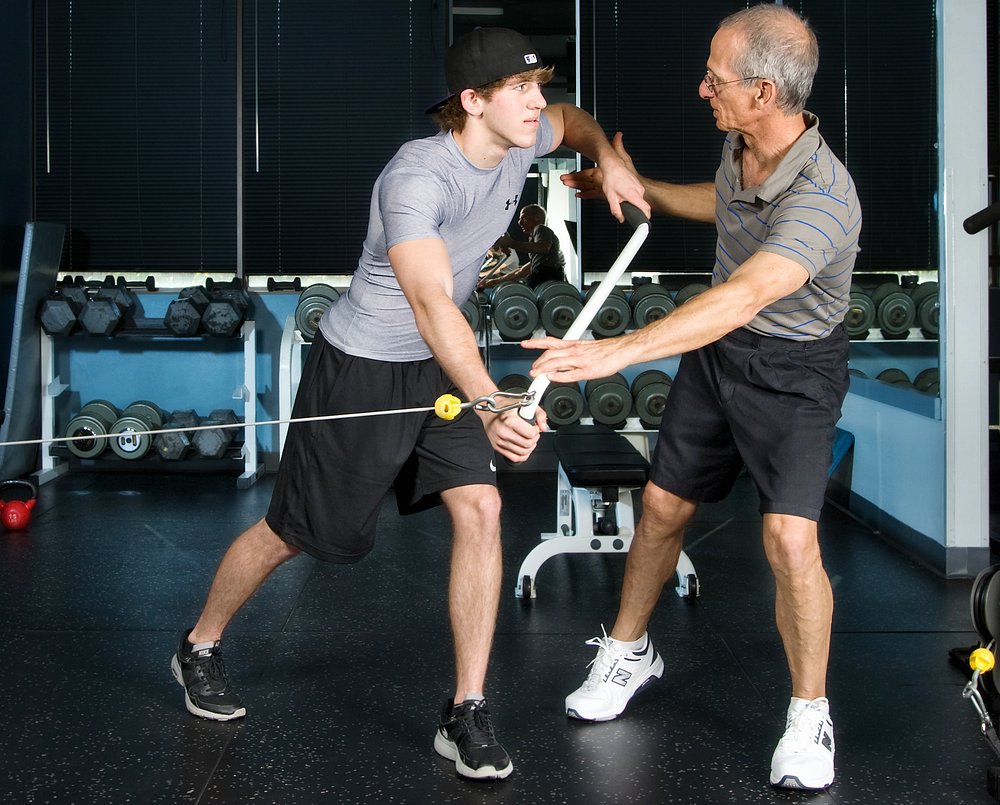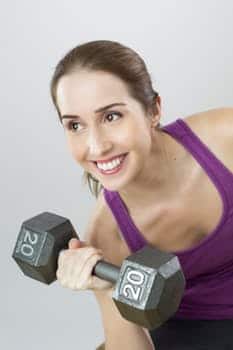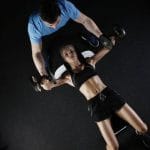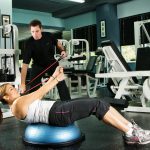
July 2017
Old Feet and ACL Repairs Affect Balance Similarly
What do the feet of older folks and those of athletes with torn anterior cruciate (ACL) have in common? The answer may solve health and sports science matters more than you’d imagine.
Much of sports science deals with the musculoskeletal system but new info is coming out about the neuromuscular system that is enlightening.
One study, for example, found that older adults, who lose some of their somatosensory mechanisms (nerve endings that send signals to the brain and muscles about where you are in space) with age, lose the “automaticity” of gait. They have to use other mechanisms – sight and cognition – to ensure balance. This diminishes many characteristics of gait – stride length, step speed, step width, push-off power.
Studies into the muscular features of age-related gait impairments have found that loss of strength and flexibility in the ankle, and of course the rest of the leg, contribute to these impairments. However, even after strengthening and stretching programs, despite improving potential gait speed and stride characteristics, subjects resort to their shorter and slower steps once outside the clinical environment. What happened to those benefits of training?
A recent study found, too, that after an ACL repair (ACLR), athletes seem to have impaired ankle and foot somatosen-sory feedback. It was hypothesized that this may be one reason ACLR athletes are prone to re-injury: their feet and ankles don’t provide the kind of feedback necessary to keep the knee aligned during high-speed multi-directional activities such as sport.
Even great therapy may not be enough to effect the kind of neuromuscular changes necessary to ensure safety.
At the recent ACSM annual meeting, it was suggested that ACLRs wait at least 9 months before returning to sport; you reduce your risk of re-injury by 50% per month each month after six.
Many studies that are looking at this issue are seeking ways to re-train the nervous system. Aging, like ankle sprains, alters somatosensory feedback, such that people “increased their reliance on visual information as a result of decreased somatosensory information from the foot/ankle complex.” This slows down gait and increases susceptibility to falls. Some researchers are investigating textured insoles (see naboso.com) to provide more tactile stimuli to the bottoms of the feet.
Until then, training does benefit gait and balance clinically but it may be best to not get injured…or get old.
Journals of Gerontology Series A: Biological Sciences and Medical Sciences 08/14
Medicine & Science in Sports & Exercise 10/16
Lower Extremity Review May 2017
Exercise of the Month
Resisted Torso Rotation with Stick
Torso rotation training is popularly done with oblique crunches, lying on your back, on the floor or over a stability ball, and bringing the rib cage to the opposite hip. But functional training demands that the movement simulate the muscle actions of the real world of life and/or sport.
Trunk training with a cable or elastic tubing is optimally performed in a position similar to one’s real-life interests. As in this picture, the athlete, who is a hockey player, is using the stick to pull on the cable which is loaded with a weight stack on a pulley system. In this case, he is pulling from a low position upward, a la a swinging motion.
This movement engages many core muscles and the legs. The erector spinae and quadratus lumborum of the low back; the obliques on each side of the body plus the rectus abdominis of the abdomen; the gluteals on the side from which the resistance occurs; and the legs, chest, arms, and forearms are all involved in this one movement. Obviously, for balance, one should perform this exercise from both sides. Recommended dosage is 1-3 sets of 10 repetitions at a load that allows you to make the movement in a fluid pattern while maintaining as neutral a spine possible.
Feel the burn.
Creatine Supplementation: A Boost for Women, too
Creatine is a molecule that makes up a critical part of the energy systems within our cells. Muscle cells need creatine to reconfigure the molecules that readily split in order to have a muscular burst of energy. These particular mechanisms allow us to make sudden, rapid, powerful movements but only for brief periods. They constitute the anaerobic energy system, that which is not dependent on oxygen; the aerobic system depends on getting in oxygen to keep operating.
Creatine supplements are usually the over-the-counter ‘drug’ of choice among male athletes trying to get larger, stronger muscles and faster short-event track athletes. While you can get creatine in animal meats, especially beef, concentrated forms of creatine (creatine monohy-drate is the most popular and studied) have been shown to benefit athletes doing power sports. It helps them develop larger muscle mass if they do heavy weight training, and allows them to recover quickly between bouts of sprints.
Most studies on creatine have been done with male subjects. More, lately, have been done with older adults, demonstrating value for increasing muscle mass even as we lose it with age. Few have been done with females.
One bodybuilding site had a well-researched article on the value of creatine for women. Citing many references from the scientific literature, the author noted:
It won’t bulk up women unless they happen to have a genetic and hormonal capacity to get big muscles; it won’t bloat you, although you do need to drink plenty of fluids, plus you could dose with it in smaller amounts over a longer period of time vs the super-dosing of over a week’s time; and it is perfectly safe unless you get dehydrated while running sprints in the heat.
Furthermore, It allows you to train harder, recover faster, get stronger faster, and meet your fitness goals with panache.
In prior newsletters, we’ve noted their value for older adults. Now it would not be unreasonable to declare that, except for those with known kidney problems, taking a supplement at low doses over a month’s time, which allows your muscles to absorb and accommodate creatine slowly, is not just good for aging men, for women of all ages.
Recipe of the Month
Yellow Lentils with Spinach & Ginger
(Used with permission of Mayo Foundation for Medical Education and Research (MFMER). All rights reserved. For more information go to http://www.mayoclinic.org/healthy-lifestyle/recipes)
Ingredients
- 1 teaspoon white or black sesame seeds
- 1 tablespoon olive oil
- 1 shallot, minced
- 1 teaspoon ground ginger
- 1/2 teaspoon curry powder
- 1/2 teaspoon ground turmeric
- 1 cup yellow lentils, picked over, rinsed and drained
- 1 1/2 cups vegetable stock, chicken stock or broth
- 1/2 cup light coconut milk
- 2 cups baby spinach leaves, stemmed and chopped, or 1 cup frozen chopped spinach, thawed
- 1/2 teaspoon salt
- 1 tablespoon chopped fresh cilantro (fresh coriander)
Directions
Toast only the white sesame seeds before using. Place the sesame seeds in a small, dry saute or frying pan over medium heat. Cook briefly, shaking the pan often, watching carefully to prevent burning. Remove the seeds from the pan as soon as they begin to turn brown. Set aside.
In a large saucepan, heat olive oil over medium heat. Add the shallot, ginger, curry powder and turmeric and cook, stirring, until the spices are fragrant, about 1 minute.
Add the lentils, stock and coconut milk. Raise the heat to medium-high and bring to a boil. Reduce the heat to low, cover partially, and simmer until the lentils are tender but still firm, about 12 minutes. The mixture should be brothy; add a little water if needed.
Stir in the spinach, cover and simmer for about 3 minutes longer. The lentils should still hold their shape. Uncover and stir in the salt. Serve hot, garnished with the cilantro and toasted white or untoasted black sesame seeds.
Nutritional analysis per 3/4 cup serving
Calories: 243 Fat: 7 g Saturated Fat: 2 g Monunsaturated Fat: 3 g Trans Fat: 0g . Protein: 13 g Cholesterol: 0 g Fiber: 15 g Carbohydrates: 32 g Added Sugar: 0 g Sodium: 332 mg
Tid Bits
A Journal of Health Psychology (May 2017) article reports that light-intensity activity, that is, one that does not induce a sweat, a rise in heart rate or heavy breathing, improves mood and a sense of well-being. Compared to moderate-intensity activity, which induce a higher sense of well-being and reduction of pain, going from sedentary to light-intensity activity yields the “greatest increases in self-perceived wellbeing. Duke Health News 07/17
An American Heart Association advisory article in the journal, Circulation, after reviewing loads of data, concluded that (1) lowering intake of saturated fats (from meat, palm and coconut oils, etc.) and replacing them with more polyunsaturated and monounsaturated fats (from veggies and nuts) reduces cardiovascular risk by ~30%, as much as cholesterol-lowering drugs like statins; and (2) coconut oil, despite marketing claims, raises LDL cholesterol (the bad kind) in much the same way as butter, beef fat and palm oil. Replacing saturated fats with simple, refined carbs does not lower cardiovascular risk. Health News Canal 06/16/17
A May 2017 article in Current Orthopaedic Practice on line found that female college track athletes who’d had tibial stress fractures, who had a history of eating disorders or were of low BMI, recovered slower than those who were normal BMI. The average time to return to running was 13.7 weeks with more severe stress fractures taking longer, as you’d expect. Interestingly, the return to sport was not much different regardless of the type of stress fracture and BMI. But clinical healing time – that is, what the X-ray showed – was inversely related to BMI, indicating that many athletes return to sport before they are fully healed. In other words, those with low BMI were more likely to stress their limits too soon.

